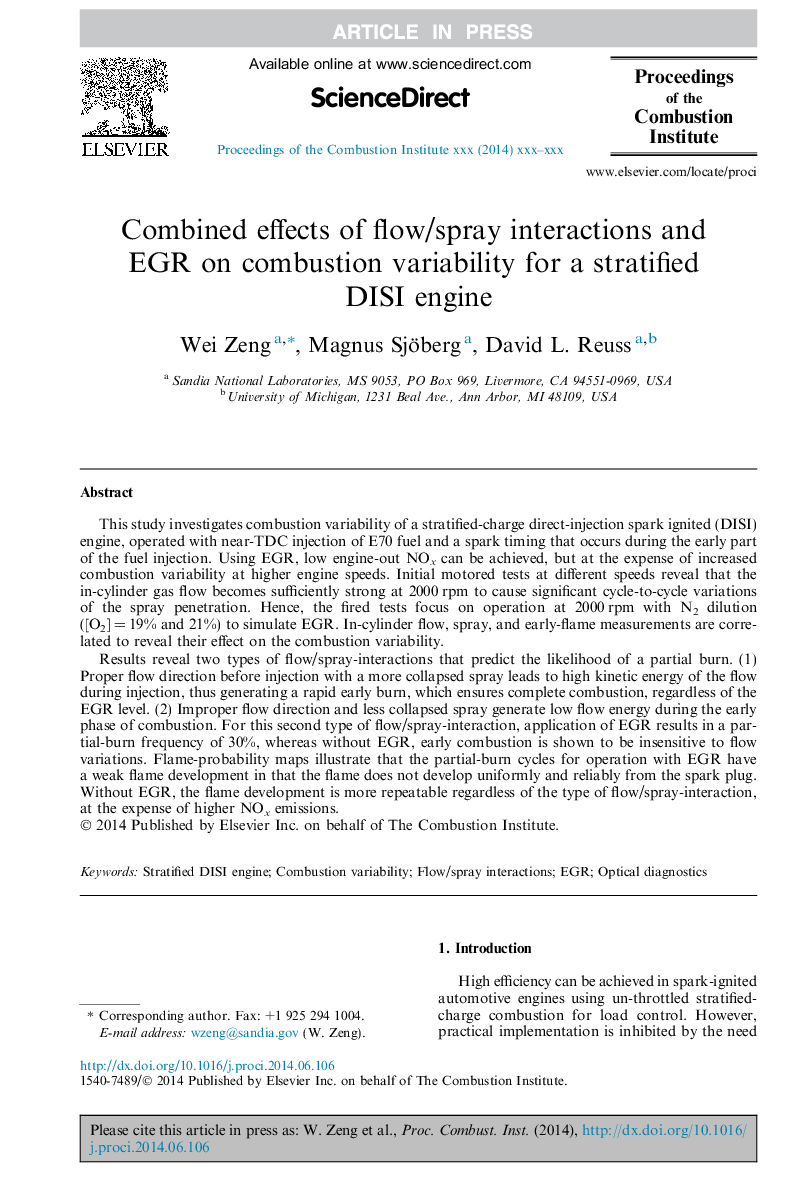| Article ID | Journal | Published Year | Pages | File Type |
|---|---|---|---|---|
| 4915542 | Proceedings of the Combustion Institute | 2015 | 8 Pages |
Abstract
Results reveal two types of flow/spray-interactions that predict the likelihood of a partial burn. (1) Proper flow direction before injection with a more collapsed spray leads to high kinetic energy of the flow during injection, thus generating a rapid early burn, which ensures complete combustion, regardless of the EGR level. (2) Improper flow direction and less collapsed spray generate low flow energy during the early phase of combustion. For this second type of flow/spray-interaction, application of EGR results in a partial-burn frequency of 30%, whereas without EGR, early combustion is shown to be insensitive to flow variations. Flame-probability maps illustrate that the partial-burn cycles for operation with EGR have a weak flame development in that the flame does not develop uniformly and reliably from the spark plug. Without EGR, the flame development is more repeatable regardless of the type of flow/spray-interaction, at the expense of higher NOx emissions.
Keywords
Related Topics
Physical Sciences and Engineering
Chemical Engineering
Chemical Engineering (General)
Authors
Wei Zeng, Magnus Sjöberg, David L. Reuss,
